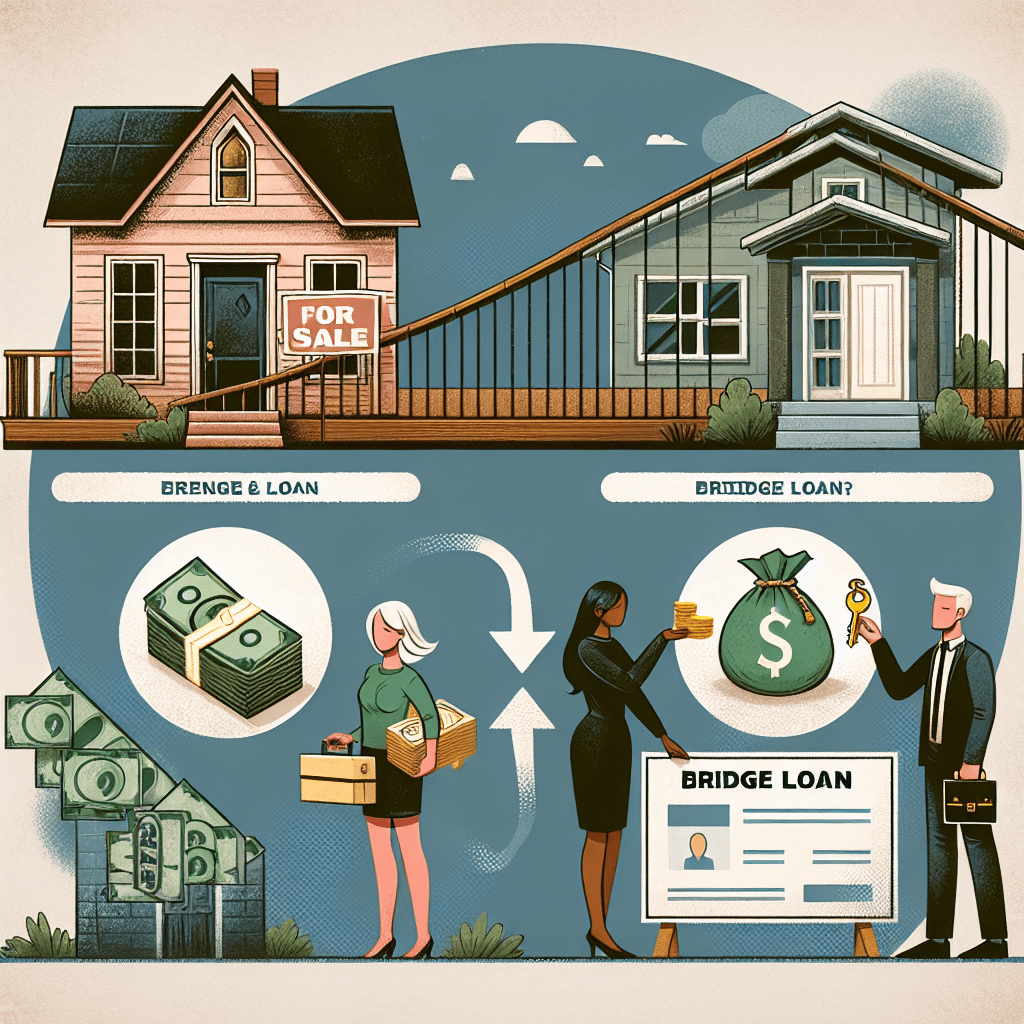Buying a new home before selling your current one can be a financial challenge. If you find your dream home but haven’t sold your existing property yet, a bridge loan might be the perfect solution. This short-term financing option helps homeowners cover the gap between buying a new home and selling their old one. In this guide, we’ll explain how bridge loans work, their benefits, risks, and whether they are the right choice for you.
What Is a Bridge Loan?
A bridge loan is a short-term loan that provides immediate cash flow to help homeowners purchase a new property before selling their current one. These loans typically last between six months and a year and are secured by the borrower’s existing home.
How Do Bridge Loans Work?
Bridge loans work by leveraging the equity in your current home to provide temporary financing. Here’s how the process typically unfolds:
- You apply for a bridge loan through a lender, using your current home as collateral.
- The lender provides a loan amount based on a percentage of your home’s value, usually up to 80% of its equity.
- You use the loan to make a down payment or cover the full purchase price of your new home.
- Once your old home sells, you use the proceeds to pay off the bridge loan.
Bridge loans can be structured in different ways. Some require monthly interest payments, while others allow you to defer payments until your old home sells.
Pros and Cons of Bridge Loans
Advantages of Bridge Loans
- Fast Access to Funds: Bridge loans provide quick financing, allowing you to secure a new home without waiting for your old one to sell.
- Stronger Buying Position: With immediate funds available, you can make a competitive offer on a new home without contingencies.
- Flexibility: You don’t have to rush to sell your current home at a lower price just to secure funds.
Disadvantages of Bridge Loans
- Higher Interest Rates: Bridge loans typically have higher interest rates than traditional mortgages.
- Short Repayment Period: These loans must be repaid quickly, usually within 6-12 months.
- Risk of Unsold Home: If your current home doesn’t sell as expected, you may struggle to repay the loan.
Who Should Consider a Bridge Loan?
Bridge loans are ideal for homeowners who:
- Have significant equity in their current home.
- Need to buy a new home quickly due to job relocation or market conditions.
- Are confident their existing home will sell within a short period.
If you have limited equity or are uncertain about selling your home quickly, alternative financing options like home equity loans or personal loans may be better choices.
Bridge Loan Example
Let’s say you own a home worth $400,000 with an outstanding mortgage of $200,000. You find a new home for $500,000 but haven’t sold your current one yet. A lender offers you a bridge loan for 80% of your home’s equity:
- Home value: $400,000
- Mortgage balance: $200,000
- Available equity: $200,000
- Bridge loan amount (80% of equity): $160,000
You use the $160,000 as a down payment on your new home. Once your old home sells, you use the proceeds to pay off the bridge loan.
How to Qualify for a Bridge Loan
Lenders have specific requirements for bridge loans, including:
- Good Credit Score: Most lenders require a credit score of 650 or higher.
- Low Debt-to-Income Ratio: Your total debt payments should not exceed a certain percentage of your income.
- Sufficient Home Equity: Lenders typically require at least 20% equity in your current home.
It’s essential to compare lenders and understand the terms before committing to a bridge loan.
Alternatives to Bridge Loans
If a bridge loan isn’t the right fit, consider these alternatives:
- Home Equity Loan: Borrow against your home’s equity with a lower interest rate.
- HELOC (Home Equity Line of Credit): A flexible credit line that allows you to borrow as needed.
- Personal Loan: An unsecured loan that doesn’t require home equity but may have higher interest rates.
- Contingency Offer: Make an offer on a new home contingent on selling your current one.
Final Thoughts: Is a Bridge Loan Right for You?
Bridge loans can be a valuable tool for homeowners looking to buy a new home before selling their current one. They offer quick access to funds and flexibility but come with higher costs and risks. Before applying, assess your financial situation, compare loan options, and ensure you have a solid plan for selling your existing home.
If you’re considering a bridge loan, consult with a financial advisor or mortgage lender to explore the best financing options for your needs.

















